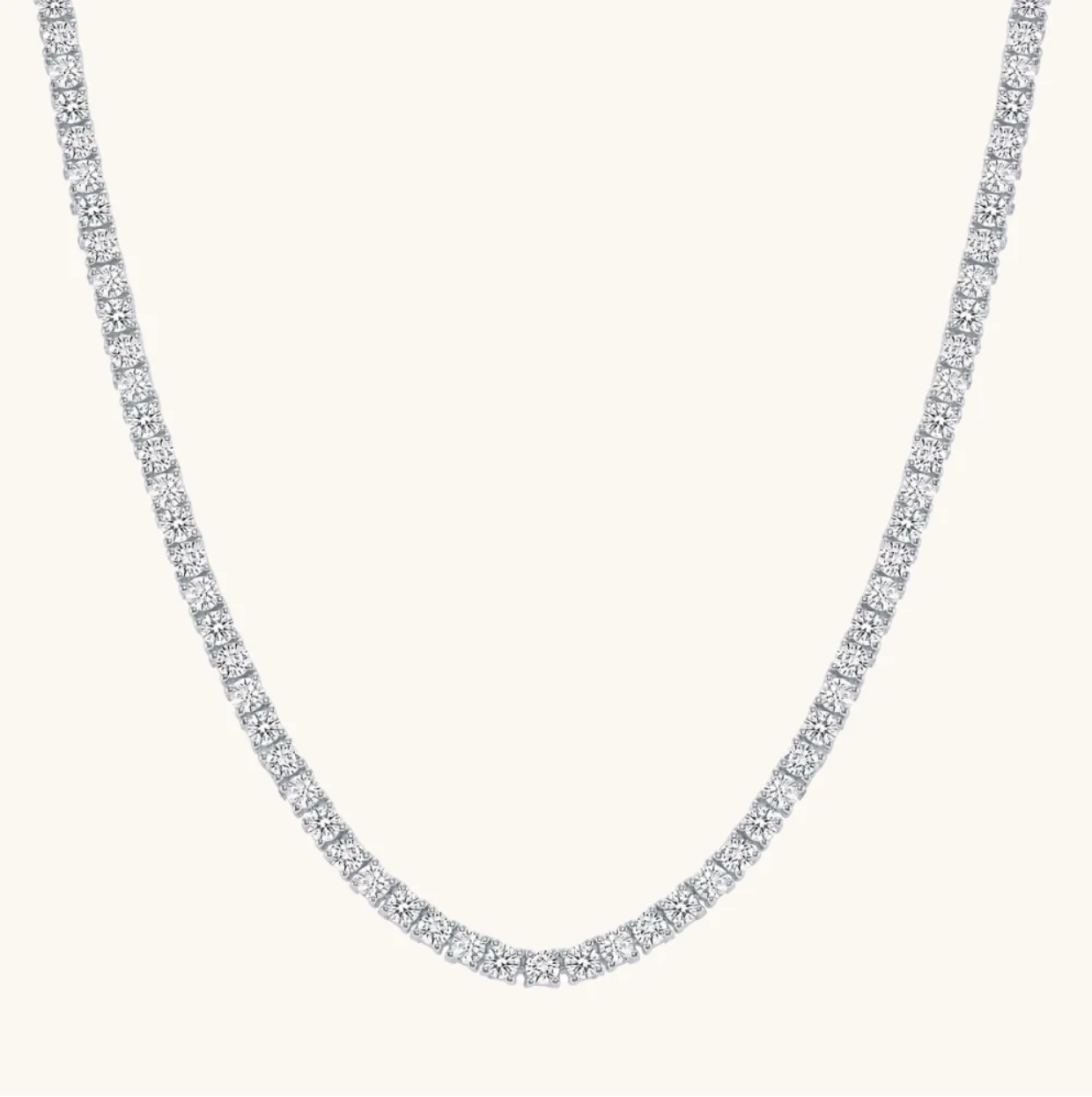Have you ever encountered a lab grown diamond?
Lab grown diamonds are exploding in popularity with diamond jewelry buyers, allowing shoppers to buy alternatives to the usually more expensive mined diamond. A lab created diamond is just as good as its natural counterparts, representing a marvel of engineering practices in the world of gemstones.
The creation process for a lab diamond is an interesting one, simulating the same pressurized process that forms a natural diamond in a controlled environment. In this guide, we're going to expand your diamond education, outlining what a lab diamond is, how they differ from natural diamonds, and the different ways a lab grown diamond is made.
What Is A Lab Grown Diamond?
A lab grown diamond, also referred to as a man made diamond or synthetic diamond, is exactly what it sounds like. These are diamonds that were created using science and engineering in a lab, resulting in a laboratory grown diamond.
Before the invention of lab grown diamonds, people could only find natural diamonds, found through diamond mining. An earth mined diamond is formed when pure carbon deposits in the earth experience immense heat and pressure, forming into diamonds over the course of billions or millions of years. Scientists mimic this process to create lab grown diamonds in significantly less time, still resulting in a beautiful, pure diamond.
What Are Lab Diamonds Made Of?
Just like a natural mined diamond, a lab grown diamond is made out of carbon. The diamond formation process that makes lab diamonds works to imitate the billion-year geological process that forms natural diamonds in a laboratory environment. We'll get more into how they accomplish this below.
Are Lab Grown Diamonds Real Diamonds?
The question that often plagues first-time diamond shoppers is whether or not a lab grown diamond counts as a real diamond. We can assure you that both diamonds are real diamonds, made of nearly identical physical and chemical makeup, and meeting the same diamond grading and certification standards.
The Federal Trade Commission (FTC) defines a diamond as a gemstone made of pure carbon that is crystallized in an isometric cubic system. These can either be formed naturally in the earth or in a lab. This means, regardless of where it may have come from, both diamonds meet the same standard definition of what a diamond is.
How Lab Grown Diamonds Are Made
As we touched on above, a natural mined diamond is formed in a process that can take millions to billions of years. Using the power of science and engineering, scientists have found a way to mimic this process, subjecting carbon to high amounts of heat and pressure to form diamonds in significantly less time.
There are two different methods that are used when creating lab grown diamonds. These are the the Chemical Vapor Deposition (CVP) method, and the High Pressure High Temperature method (HPHT) method.
Important Note: CVD DOES test as real on a diamond tester and HPHT does NOT test as real on a diamond tester. Happy Jewelers only sells CVD, so if you find cheaper lab diamonds elsewhere, they are usually HPHT.
Chemical Vapor Deposition Method (CVD)
The Chemical Vapor Deposition (CVD) process uses a small slice of diamond to start. To begin, a small diamond slice is cut and cleaned before being placed into a secure chamber. This chamber is then filled with carbon rich gas, which is met with hot temperatures.
As the gas reacts to the heat in the chamber, carbon will crystalize and form around the diamond size, forming a new diamond. Over the course of a few weeks, carbon gas is added to the chamber and heat is maintained to build up this new rough diamond shape.
Once finished, the chamber and diamond will be cooled. Then, the rough diamond experiences cutting and polishing, before it is sent to be graded and certified.
High Pressure High Temperature Method (HPTP)
The High Pressure High Temperature (HTP) diamond formation process sees a small diamond seed, made of carbon, be put under an immense amount of pressure and heat to form a diamond.
To begin, scientists take a diamond seed and place it in some kind of high pressure press, either a cubic press, belt press, or split-sphere (BARS) press. The amount of pressure placed on the diamond is around 1.5 million pounds for every square inch. It is also heated with electrical pulses at over 2000 degrees Fahrenheit.
The combination of this pressure and heat works to melt carbon so it will crystalize around the diamond seed. This process can take a few weeks to a month, typically around 21-28 days. (Much faster than a couple of million years!) The diamond is then carefully cooled, cut, and polished before being sent off for certification and grading.
In Conclusion
We hope this clears up any questions you may have had about what lab grown diamonds are, and how they are made!
As you can see, the creation process for lab grown diamonds is an impressive feat of science and engineering. They’re a great way to create diamonds, providing more options to buyers in the jewelry market today.
Lab Grown Diamonds: Frequently Asked Questions
If you still have questions, we have answers! Here are the common questions people have regarding lab grown diamonds.
Can you tell the difference between mined diamonds and lab diamonds?
Even to the well trained eye, a mined diamond and a lab diamond are difficult to distinguish between one another. It takes extremely sophisticated equipment and a practiced gemologist to test the actual chemical makeup of the diamonds to find their minor chemical differences. Visually, though, both diamonds will appear identical, with no clear way to identify their difference.
How long does it take to make a lab grown diamond?
Depending on the specific process used, making a lab grown diamond can take anywhere from a few weeks to a month. This might sound long, but it’s a much shorter time frame than the amount of time needed for natural diamonds to form. A natural diamond can take millions to billions of years to form!
Can lab grown diamonds be certified?
Lab grown diamonds are certifiable the same way earth mined diamonds are. Both kinds of diamonds can be certified by qualified groups to speak to their clarity, cut, color and carats, ensuring it’s a real diamond when you purchase.
Why do people buy lab grown diamonds?
There are a number of different benefits to buying lab grown diamonds that we will summarize here.
The main reason people prefer lab grown diamonds is their cost-effectiveness. Natural diamonds are a finite resource, making them increasingly rare to source and thus driving up their price point. As there can be an endless supply of lab made diamonds, they often come in at much more reasonable price.
A lab made diamond also has the benefit of being a much more ethically sourced gemstone. Many of the real diamonds used in diamond jewelry today are blood diamonds, resulting from violent histories of diamond mining. With a lab made diamond, you won’t have the same ethical concerns when diamond shopping.
Finally, lab grown diamonds are also much more environmentally friendly than a natural diamond! Diamond mining uses an incredible amount of fossil fuels, and requires mining and forest-clearing practices that harm the environment. Lab grown diamonds do not have this same impact, making them significantly better for the planet.





Share:
How Are Lab Diamonds Graded and Certified?
What are Lab Grown Diamonds?